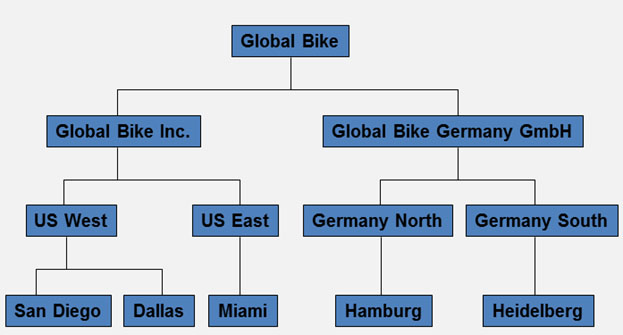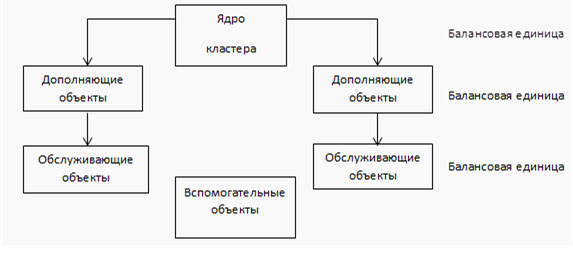
2nd grade master - student,
Kazakh-German University
Department of Logistics,
Scientific supervisor – Kegenbekov Zhandos Kadirkhanovich
Ph.D., associate professor
Head of the Faculty of Engineering and Information Technology
One of the most effective ways to modernize and develop transport potential is the creation and development of transport and logistics clusters. A transport and logistics cluster is defined as a complex of geographically localized interconnected companies and organizations specializing in the storage, escort and delivery of goods and passengers. The most important part of the functioning of the cluster is information flows, which include collection and registration of data, processing and transmission of data, storage, protection and analysis of information. The development and implementation of modern information technologies is currently one of the urgent tasks of transport logistics.
Key words: cluster, SAP-ER, logistic center
For the first time the concept of a cluster appeared in the 80s in the works of the famous economist Michael Porter. Transport and logistics clusters (TLC) are one of the mixed types of clusters, which include a complex of infrastructure and companies specializing in the storage, escort and delivery of goods and passengers. Transport and logistics clusters are developing in regions with significant transit potential. The elements that belong to the core of the cluster carry out the main activity, and may include 3PL providers, 4 PL providers, multimodal and intermodal transport operators, large trucking and railway companies, airlines.
Cluster servicing objects are objects that are required, but activities that are not directly related to the functioning of the "core" objects. The service objects can include enterprises that implement the service functions of the cluster, i.e. informational, sales, repair, etc. In addition, the service facilities include the financial center of the cluster, i.e. a banking structure that provides financial support for the activities of cluster enterprises [1]. Also, they will include commodity and customs warehouses, freight forwarders, customs brokers. Complementary elements of the cluster will include research institutes and educational institutions. Ancillary sites will include consulting businesses, resellers, distributors, companies, licensing and certification bodies. A feature of auxiliary elements is that their presence is not necessary for the full functioning of the TLC. For the sake of optimizing the activities of the cluster, the functions of advertising, marketing and information services will be more profitable to outsource.
The most important part of the functioning of the cluster is information flows, which include data processing and transmission, storage, protection and analysis of information. It is possible to solve the problem of accelerating document circulation, improving the quality of registration, ensuring the smooth movement of goods by automating information processes. Various electronic data interchange systems are widely used today. The development and implementation of modern information technologies is currently one of the urgent tasks of transport logistics. One of the possibilities for the development of the cluster will be the use of SAP ERP software.
ERP (Enterprise Resource Planning) system is needed in order to store and process critical data, without which the functioning of the company is impossible. SAP ERP software used within the TLC will allow you to manage external and internal resources.
Concern SAP was founded in Germany in 1972. It is currently one of the largest software development companies in the world. From the very beginning of its activity, the company has been engaged in the automation of management processes within enterprises, covering accounting, financial transactions and orders for the production of products. Over time, personnel management and warehouse management appeared among the modules of the system. More detailed information about the modules is presented in Table 2. Currently, SAP consists of groups of logically related operations (transactions) within separate business functions.
Table 2. Functional areas of the SAP program
| Module | Description of the module function |
|---|---|
| MM Purchase | Material management. Acceptance of procurement bids |
| PP Production | Discrete or continuous production planning |
| FI and CO Tracking | financial control and management accounting. Analysis of profit, expenses and income |
| НСМ People | staff recruitment, salary payments |
| EWM Storage | Warehouse management |
| CS Service | Service cycle management, analytical reporting |
| SD Sales | Systematic sales processes, picking, shipping |
Source [2]
SAP ERP is an enterprise resource planning system that allows a company to maintain and optimize its processes. The main applications of SAP ERP are logistics, human resources and finance.
Figure 1 shows the organizational levels of the sales system in the SAP program and the structure of materials management.

Picture 1 Materials Management Structure in SAP ERP Source [3]
The Global bike in this scheme is a client - it is an independent unit in the system. The rest of the divisions in the system will be company code. The company code represents a legally independent unit of account and is the minimum unit for which a complete set of regulatory reporting can be created.
The installation of SAP ERP software has certain advantages and disadvantages, which are indicated in Table 3. As in the ERP system, this software has the ability to include a large number of processes, given the possibility of expansion and growth of the company.
Table 3. SWOT analysis for the implementation of SAP ERP software in the framework of transport and logistics clusters
| Strengths: | Weaknesses: |
|---|---|
| system flexibility multilingual interface reduced human error implementation experience among large companies supplier reliability |
long-term nature of achieving positive results software cost constant technical support requirement the complexity of the system due to the large number of connections between objects |
| Capabilities: | Possible risks: |
| process optimization close cooperation between cluster elements at all stages of work |
lack of experience in implementing the system at the cluster level data security, long process of setup and testing high level of implementation costs ineffective project management |
Source: compiled by the author based on [3]
Kareva I.N. in the article "Comparative characteristics of SAP and Oracle ERP systems" notes that the flexibility of the SAP system will be both an advantage and a disadvantage
After conducting the SWOT analysis, it is worth highlighting the proposals for the implementation of the SAP ERP system in the transport and logistics cluster. The main purpose of using the SAP system within the transport and logistics cluster will be to improve business processes. Figure 2 shows the proposed hierarchy of the transport and logistics cluster after the implementation of SAP software. The cluster itself will be considered a client, and its structural elements will be company codes.

Picture 2. Organizational structure of TLC after SAP ERP implementation. Compiled by the author based on [4]
The process of implementing the system itself will be a rather complicated and lengthy process. It is recommended to split the software implementation process into several stages, which are indicated in Table 4. The exact timeline will depend on the participants of the transport and logistics cluster, and the full transition may take several years.
Table 4 Stages of SAP ERP software implementation in the transport and logistics cluster.
| Name of the stage | Description of the stage |
|---|---|
| preparatory stage | study of the client's previous activities |
| negotiations with the supplier | development and approval of proposals for improving the cluster's performance |
| conclusion of a contract | the supplier and the client come to a decision regarding the solutions provided, taking into account the specifics of the cluster operation |
| software installation | supplier provides SAP software |
| staff training | training employees to work with the program in practice |
| service maintenance | Includes maintenance after performing the services specified in the contract |
compiled by the author based on [4]
It is worth paying special attention to the stage of employee training. The stage should include theoretical lessons and the necessary teaching materials for training, as well as practice of working with the program. Difficulties may arise in the fact that it is necessary to organize training of employees of the cluster elements in accordance with their job responsibilities. In addition, the use of the SAP ERP system in the daily activities of the cluster will require some adaptation even after successfully mastering the theoretical and practical course. Klaus Schira, one of the founders of SAP, commented on his customer training experience: “I have never learned so much in such a short time, thanks to the mistakes that twenty of my students made. You will never make so many mistakes working alone”. [4]
In recent years, the influence of information and communication technologies on the possibilities for the development of TLC has been growing. The development and implementation of modern information technologies is currently one of the urgent tasks of logistics. The greatest effect from the use of an ERP system can be achieved provided that all cluster members are in the same information space. The SAP system used in the transport and logistics cluster will inform all participants at the same time.
Bibliographic list: